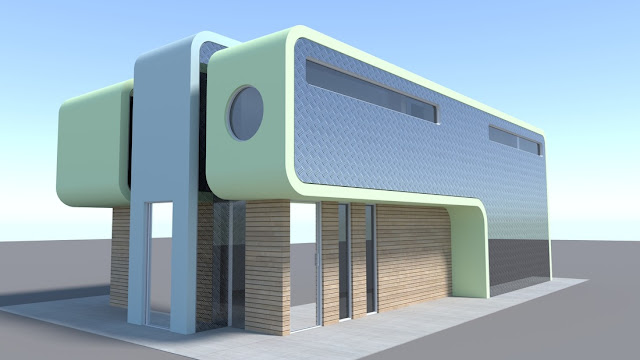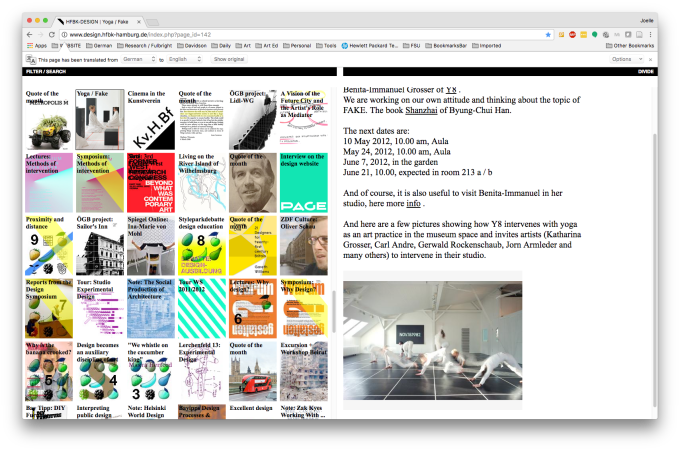 |
| Planetarium Hamburg, http://www.planetarium-hamburg.de/ |
Happy Labor Day / Tag der Arbeit!
Begun during my adventures overseas, the Female Expat Project began as a collection of artworks about female expatriates and their original ideas about place. On the flip side of expatriates' nomadic lifestyles are contemporary nesting instincts—also explored in this blog. Really it's a publicly available sketchbook in the cloud supporting my artwork. http://joelledietrick.com
 |
| Planetarium Hamburg, http://www.planetarium-hamburg.de/ |
 |
| Slide: 7 / of 9 from January 2017 Wired article: The panels were slotted into place like pieces of a puzzle. Photo Ben Koren. |
The auditorium—the largest of three concert halls in the Elbphilharmonie—is a product of parametric design, a process by which designers use algorithms to develop an object’s form...“That’s the power of parametric design,” he [acoustician Yasuhisa Toyota] says. “Once all of that is in place, I hit play and it creates a million cells, all different and all based on these parameters. I have 100 percent control over setting up the algorithm, and then I have no more control.”
 |
| Strategies for parametric design in the Elbphilharmonie by Korean acoustician Yasuhisa Toyota with Herzog and De Meuron |
 |
| Herzog and De Meuron, Elbphilharmonie, 2007–2016, Hamburg, Germany |
 |
| Model made in Blender. From http://architectureblender.weebly.com/ |
 |
| Vito Acconci inside one of his modules for “Project for Klapper Hall,” from 1993-95.Credit Fred R. Conrad for The New York Times |
“It was sort of a way to get myself off the writer’s desk and into the city,” he once told the musician Thurston Moore. “It was like I was praying for people to take me somewhere I didn’t know how to go myself.”How I feel about my class at HFBK. It structures my research and forces me out of the studio to meet locals and see the city.
That ambition took hold fully in the mid-1970s, when, in a radical career turn, he abandoned the gallery world and remade himself as a highly unorthodox architect and designer, creating works like public parks, airport rest areas and even an artificial island on a river in Austria.
The move confused his peers and caused his profile in the art world to recede, to the point where many younger artists who were indirectly influenced by his work had little idea who had created it. In his later years, Mr. Acconci sometimes agonized over this situation, but he said he had no choice but to follow his interests where they took him — which was no less than an ambition to change the way people lived.3) His approach to architecture:
“I wish we could make buildings that could constantly explode and come back in different ways,” he said in one interview. “The idea of a changing environment suggests that if your environment changes all the time, then maybe your ideas will change all the time. I think architecture should have loose ends. This might be another problem with Modernism — it’s too complete within itself.”Why I'm studying the Chilehaus, but more about that in another post.
 |
“Murinsel,” a floating platform in Austria designed by Mr. Acconci. DeAgostini/Getty Images
CrediDeAgostini/Getty Images |
 |
| Jesko Fezer, http://www.design.hfbk-hamburg.de/index.php?page_id=30 |
 |
| Hafen City Tours, Grüner Landgang / “Green” shore tour, http://www.hafencity.com/en/infocenter/guided-tours.html |
 |
| New gallery in Hamburg, Germany, 4'O Clock Light, More at http://www.4oclocklight.com/ |
 |
| Post-Internet Cities Conference, MAAT - Museum of Art, Architecture and Technology | Lisbon, 26 May 2017 |
 |
| Gästehaus der Universität Hamburg, March 2017, just before we arrived and they had a warm spell. |
 |
| Husband Owen and six-year old daughter Sophia on Easter Sunday at the Kunsthalle Hamburg during my Fulbright here. |
We considered this question head-on in Paris, where the American School of Paris was one of our options for Kaitlin’s education in this city. Kaitlin and I visited together, and we both had the same reaction.
The American School of Paris could be the American School of Any American Town. Every student is from the States, as is every member of the faculty. English is the only language spoken. The curriculum, the calendar, the sporting events, the special events, the locker rooms... everything about the school is as it would be Stateside. Nothing wrong with this, per se, but it seemed a shame to us for Kaitlin to miss out on the chance to learn French, to make friends from all over the world…
here’s what I can tell you: Your children will be fine. The truth is, their move will be harder on you than it will be on them. They will learn the new language quicker than you will, they will make new friends more easily, and they will assimilate more readily.
If you let them.
Our first six months in Paris, Kaitlin would sit at the dining room table after dinner doing her homework—all in French. Before our arrival in this country, she’d never studied the language. Then, overnight, she was studying in the language, doing high school math in French. The work would take her hours, after which she’d retire, exhausted and nearly in tears.
Then she’d have to get up the next morning to return to school, where, again, all lectures, presentations, and course materials were in French. This shouldn’t be so hard on her, the mother in me couldn’t help but observe. I made an appointment to meet with her advisor at school, who said this:
“Kaitlin is struggling, yes. But you must let her struggle. It is good for her.”
This is the last thing a child wants to hear and the hardest thing for a parent to accept. But I tell you now, it is the right thing, the true thing. After six months of exhausting effort, Kaitlin was bilingual. She retains this asset, which, already, has opened doors for her.
 |
| Hamburg Sud ship in the Port of Hamburg, sunny Sunday, April 9, 2017, photo by Joelle Dietrick |
 |
| HFBK symposium this week on the Aesthetics of the Virtual. More info at: http://www.aesthetikendesvirtuellen.de/de/veranstaltungen/symposium-mediale-revolutionen |

 |
| Naeem Mohaiemen’s “Tripoli Cancelled” installation. Credit Mathias Völzke. From the New York Times review of 2017 Documenta in Athens. |
